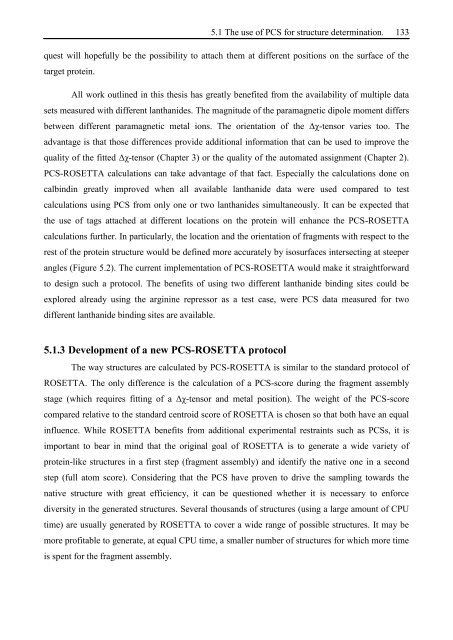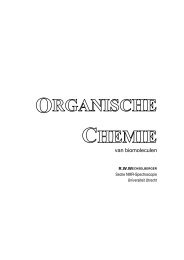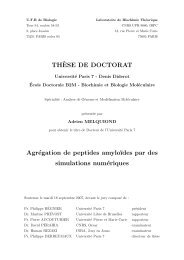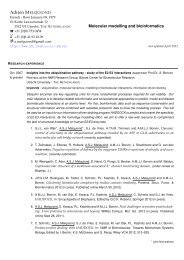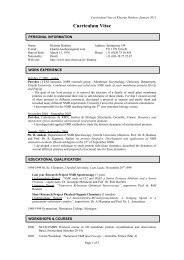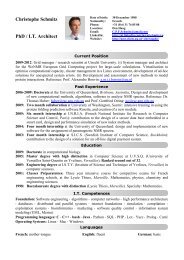Thesis Title: Subtitle - NMR Spectroscopy Research Group
Thesis Title: Subtitle - NMR Spectroscopy Research Group
Thesis Title: Subtitle - NMR Spectroscopy Research Group
You also want an ePaper? Increase the reach of your titles
YUMPU automatically turns print PDFs into web optimized ePapers that Google loves.
5.1 The use of PCS for structure determination. 133<br />
quest will hopefully be the possibility to attach them at different positions on the surface of the<br />
target protein.<br />
All work outlined in this thesis has greatly benefited from the availability of multiple data<br />
sets measured with different lanthanides. The magnitude of the paramagnetic dipole moment differs<br />
between different paramagnetic metal ions. The orientation of the Δχ-tensor varies too. The<br />
advantage is that those differences provide additional information that can be used to improve the<br />
quality of the fitted Δχ-tensor (Chapter 3) or the quality of the automated assignment (Chapter 2).<br />
PCS-ROSETTA calculations can take advantage of that fact. Especially the calculations done on<br />
calbindin greatly improved when all available lanthanide data were used compared to test<br />
calculations using PCS from only one or two lanthanides simultaneously. It can be expected that<br />
the use of tags attached at different locations on the protein will enhance the PCS-ROSETTA<br />
calculations further. In particularly, the location and the orientation of fragments with respect to the<br />
rest of the protein structure would be defined more accurately by isosurfaces intersecting at steeper<br />
angles (Figure 5.2). The current implementation of PCS-ROSETTA would make it straightforward<br />
to design such a protocol. The benefits of using two different lanthanide binding sites could be<br />
explored already using the arginine repressor as a test case, were PCS data measured for two<br />
different lanthanide binding sites are available.<br />
5.1.3 Development of a new PCS-ROSETTA protocol<br />
The way structures are calculated by PCS-ROSETTA is similar to the standard protocol of<br />
ROSETTA. The only difference is the calculation of a PCS-score during the fragment assembly<br />
stage (which requires fitting of a Δχ-tensor and metal position). The weight of the PCS-score<br />
compared relative to the standard centroid score of ROSETTA is chosen so that both have an equal<br />
influence. While ROSETTA benefits from additional experimental restraints such as PCSs, it is<br />
important to bear in mind that the original goal of ROSETTA is to generate a wide variety of<br />
protein-like structures in a first step (fragment assembly) and identify the native one in a second<br />
step (full atom score). Considering that the PCS have proven to drive the sampling towards the<br />
native structure with great efficiency, it can be questioned whether it is necessary to enforce<br />
diversity in the generated structures. Several thousands of structures (using a large amount of CPU<br />
time) are usually generated by ROSETTA to cover a wide range of possible structures. It may be<br />
more profitable to generate, at equal CPU time, a smaller number of structures for which more time<br />
is spent for the fragment assembly.


